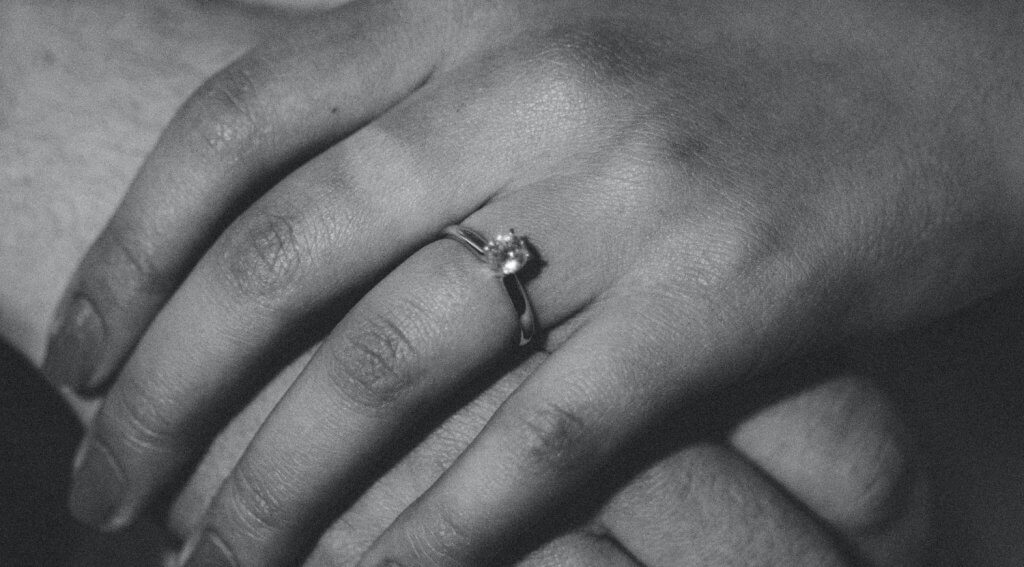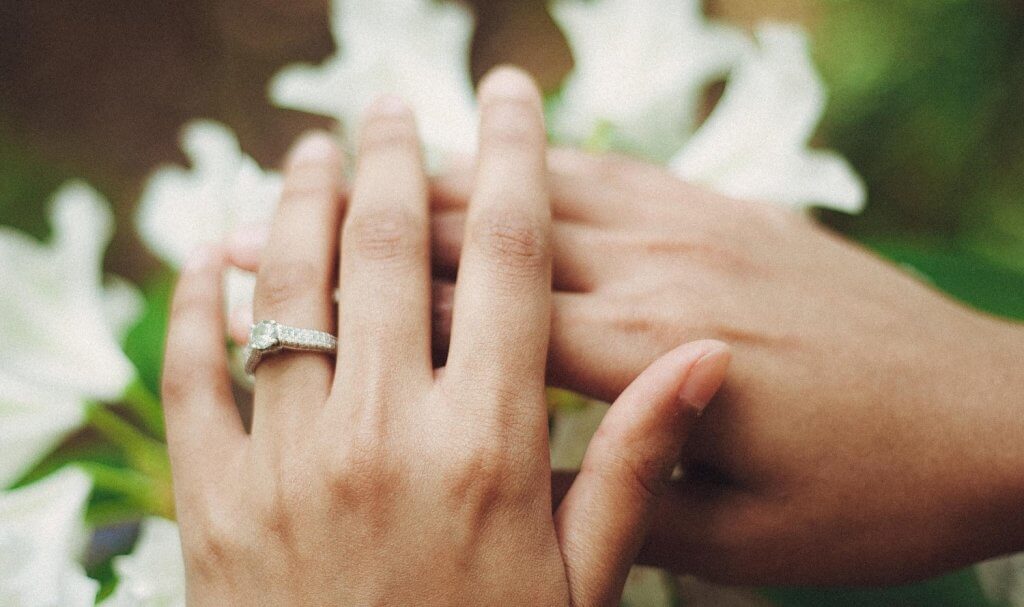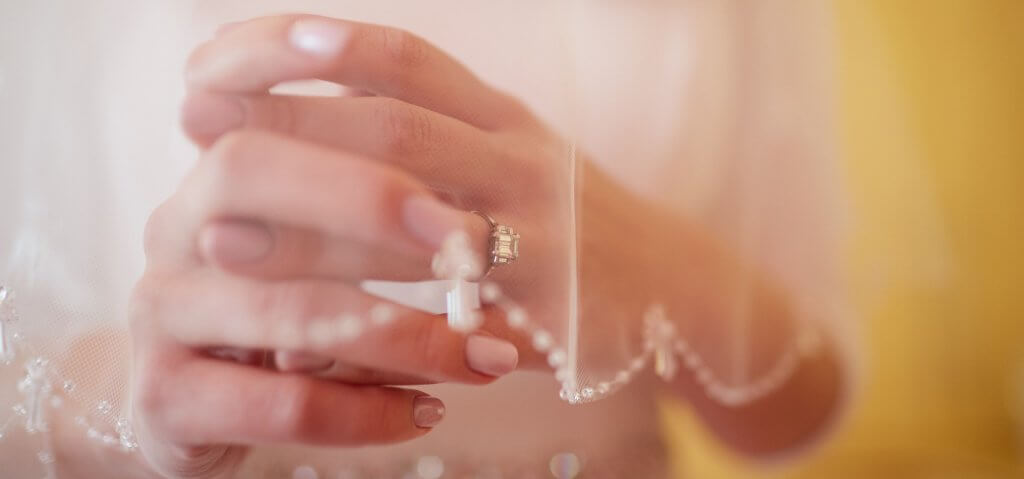The Debate Continues: White or Yellow Gold for Diamonds?
Key Takeaways
- White gold is bright, versatile and doesn’t reflect any unwanted color through the diamond.
- Any trace of visible color, however, is more likely to be noticeable. As well as this, the rhodium-plating needs to be maintained.
- The shade of yellow gold depends on the karat type. A higher karat will give a bolder, stronger yellow, while a lower karat will have a paler hue.
- There is a lot to love about the way yellow gold contrasts with diamond. It pairs best with a Near Colorless (rather than a Colorless) diamond, and it’s more of a traditional choice.
- Consider whether or not you’re happy with color reflecting through the diamond and it is more likely to clash with colored stones.

One of the great things about white diamonds is that they pretty much look good with anything. Their bright shine and attention-grabbing sparkle make them a clear focal point on for any wearer, against any clothing or style, and in any shade of gold.
Nevertheless, making the choice between white and yellow gold isn’t as easy as shrugging peaceably and telling your jeweler, “They both look good – you pick.” It’s a big choice, and one that will totally change the look and feel of your ring once it is complete.
Putting as much thought into your diamond as you have, you want to make sure it’s complemented as much as possible by the setting, so which is the right metal for you? Read more below.
Diamonds in White Gold
Impact: Bright, Modern, Celestial, Luxurious.
White gold is a combination of yellow gold, alloying metals like silver, nickel, and palladium – all colors that help to ‘dilute’ gold’s warmth to a near-white color. For that near white to become the stark, bright white you are used to seeing in jewelry, the metal needs to be dipped in rhodium, which forms a thin layer or ‘plate’ over the surface and takes away those yellow undertones the gold content will create.
Some people do prefer the look of white gold before the rhodium plating has been added, but it’s significantly less popular as it can make the jewelry appear a little antiquated.
We’ve written a much more comprehensive guide to white gold already, and it’s worth looking at if you’re considering this metal for your engagement ring.
White gold is often valued for the arresting contrast it creates against the skin but, when used to set a white diamond in place, the opposite holds true.
Like platinum, the silvery sheen of white gold creates a dazzling combination with a white diamond. It appears luminous – more intense than the rest of the wearers’ jewelry collection. Coupled with the brilliance and fire of a beautiful center stone, creates a radiant focal point on the wearer’s finger.
True, from a distance the boundary between metal and diamond is a little less clear than it is between a colored gold (yellow or rose) and a white diamond, but whether you see this as a positive or a negative comes down to personal preference.
White gold creates an elegant and understated setting for a diamond, and a bold impression against any skin tone.
Advantages
- Bright, but Unobtrusive
There are clear similarities between the coloration of a white diamond and white gold, but the two interact with the light totally differently. While white gold radiates, diamond sparkles and glitters – and, combined, the effect is breathtaking. - The Diamond Doesn’t Take on Any Unwanted Color
A diamond set within yellow gold will inevitably draw some of that color into its center, which makes a diamond featuring a particularly high color grade a little redundant. If you want to keep your diamond looking as bright and colorless as possible, a white gold setting is the better option. - It’s Highly Versatile
The clean, crisp beauty of white gold and platinum engagement rings is pretty much timeless. Some of the most influential engagement rings of all time – rings belonging to Elizabeth Taylor, Princess Grace of Monaco, and Beyonce, as well as signature pieces from brands as notable as Cartier and Tiffany & Co. – are defined by the timeless combination of bright, colorless metal and white diamond. - It Suits Every Color
If any of the accents in your ring’s design are fancy colored diamonds or gemstones, it’s a given that white gold will offer the ideal neutral frame for them – no clashing or awkward color combinations.
Disadvantages
- Contrast = More Visible Color
Any slight trace of visible color in your diamond is likely to be more noticeable in white gold than it would be against yellow gold, because of the contrast created between the two. Spending slightly more on a diamond with a higher color grade (around a G or H) will be the best solution, particularly if the diamond shape you have chosen is known for retaining color – for instance, the Cushion cut. - The Rhodium-Plating Needs to be Maintained
As we mentioned above, most people have a strong preference for white gold that is rhodium-plated, rather than white gold that still carries a warm, yellow undertone. If your ring is rhodium-plated, it is inevitable that you’ll need to get it re-dipped regularly – say, once a year or so. This isn’t a big deal, but keep in mind that, whenever the plating does start to fade, you may be less enamored of your ring’s appearance. Sure, it’s temporary, and only lasts until you get to a jeweler, but if your schedule is often busy enough to delay non-essential tasks for weeks on end, you might be bothered by this change of appearance.
Diamonds in Yellow Gold
Impact: Classic, Warm, Romantic, Opulent.
The intensity of yellow gold’s color totally depends on karat type, since a lower karat will yield a much paler hue, while a higher karat type will yield a bolder, stronger yellow that stands out more against the skin – and a diamond.
Whichever karat type you choose, however, the effect will follow the same lines: a beautiful and compelling contrast of warmth and cold (the icy brightness of the diamond), and a timelessly opulent impression.
While white gold blends with the diamond, yellow gold has the opposite effect, maintaining that distinction between stone and metal, and allowing the elegant shapes of the setting to stand out without detracting from the diamond. Each prong, bead, and thread of gold stands out as a feature, but a skilled jeweler will ensure that these features remain secondary – architectural, yet decorative.
The contrast emphasizes the brightness, brilliance, and fire of the diamond, and makes it appear all the more luminous as a result.
Positives
- The Beauty of Contrast
Just as the moon stands out better against a dark sky, so does a white diamond against a colorful setting. Sure, no one is going to overlook your diamond just because it’s in a white gold or platinum setting, but there is something particularly striking about the contrast of warm gold and stark white. - Color Enhancement for Lower Grades
One of the more practical benefits brough by gold is its ability to ‘mask’ a small amount of color in a diamond. Since the setting will feature significantly more warmth and color, a diamond of, say, an I or J color will appear brighter as a result of this contrast. It’s not a miracle-worker and won’t make an L color diamond look like a D color diamond, but it’s handy to know. - The Traditional Choice
What could be more traditional than yellow gold, which has been used as a symbol of love and commitment across millennia?
Disadvantages
- Some Color is Reflected Through the Diamond
While diamonds that have been graded at the lower end of the Near Colorless range tend to be complemented by yellow gold, the opposite holds true for diamonds that are practically colorless. If you invest in a diamond with a D, E, F, or even G color, you may find it is wasted against a yellow gold setting, particularly if the shape is prone to holding onto color. - It’s More Likely to Clash with Colored Stones
Yellow isn’t the most versatile color, although the natural beauty of yellow gold makes it more versatile than, say, a primary yellow. Besides, jewelers have combined the metal with every color of diamond and gemstone under the sun over the years, with dazzling results.
Our Summary
The question of white gold vs yellow gold is not easy to answer. Both metals have been used time and time again to create some truly beautiful designs, and there will never be a definitive ranking for the two.
One of the easiest solutions is to look in your partner’s jewelry box and see what they gravitate toward. A lot of people have a preference for one or the other.
Alternatively, consider a mixed metal engagement ring. Modern, bold, and a great way of incorporating the benefits both metals offer for diamonds into a single, unique piece.

Aug 17, 2021 By Willyou.net
The Pavé Setting: The Complete Guide

Mar 12, 2022 By Willyou.net
These Settings Will Make Diamonds Look Bigger!








